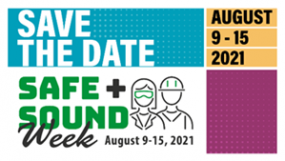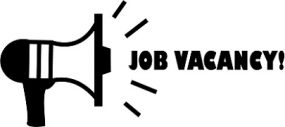eNews: Volume 18, Number 12 (April 2021)
Volume 18, Number 12 (April 2021)
From the Director’s Desk
John Howard, M.D. Director, NIOSH
April Is Workplace Violence Awareness Month
Workplace violence is any type of violence or threat of violence against workers. It generally occurs in the workplace but can also happen away from it. Workplace violence can range from threats and verbal abuse to more serious events that lead to physical assaults, homicides, and mass casualty events, such as those that occurred recently at workplaces in Atlanta, Georgia, and Boulder, Colorado. Because April is Workplace Violence Awareness month, we would like to share resources on what we know based on research and also where research gaps still exist.
Workplace violence can occur anywhere and at any time, but certain groups of workers are at increased risk. These groups include those who exchange money with the public; transport passengers, goods, or services; work alone or in small groups late at night or early in the morning; and come into close contact as they treat and provide patient care. Examples include retail workers, nurses, taxi drivers, and others who commonly interact with customers, clients, or patients. However, workplace violence doesn’t have to involve workers and customers or clients. Threats and assaults can also come from other employees, supervisors or managers, a domestic partner, or a current or former spouse.
The risk of workplace violence has not decreased during the pandemic—in fact, many incidents have occurred in the past year. The pandemic has intensified feelings of stress and created uncertainty about the future for many, including employers, workers, customers, and clients. Workers were threatened and assaulted as businesses implemented new disease prevention policies and practices. In response, CDC has developed guidance for employers and employees in retail and service industries to address workplace violence during this time of uncertainty. Over the last year, there were other violence incidents, including ones affecting healthcare workers, public health professionals, and other frontline workers who experienced stigma, threats, and assaults. Some CDC guidance may be applicable to these groups of workers as well.
NIOSH researchers have studied this complex issue since workplace violence was identified as a public health concern in the late 1980s and early 1990s. Employers and employees in large and small businesses, as well as healthcare settings, can use these resources and trainings to help reduce workplace violence. While we have learned a lot about workplace violence prevention over the years, knowledge gaps still exist. And with that, NIOSH continues to prioritize the need for additional research to improve violence prevention for workers through non-pandemic and pandemic-related research.
For the NIOSH 50th Anniversary, please enjoy this limited time series of “NIOSH Now” and “NIOSH Then” where we look back at research efforts inside & outside of NIOSH from the past 50 years.
New Model Looks Beyond the Workplace for Influences on Worker Safety and Health
With the array of influences on worker safety and health, how do researchers know what questions to ask or where to look for issues? Traditionally, they focused on the workplace itself. As the COVID-19 pandemic and other current events have shown, however, outside influences—social, political, and economic—can have profound effects.
To account for these outside influences, NIOSH-funded researchers at the Harvard T.H. Chan School of Public Health Center for Work, Health and Well-being developed an expanded model of worker safety and health. The new model includes influences such as dependence on technology, climate change, and international connectedness, or globalization, according to a recent study in the journal Social Science & Medicine.
The researchers explored scientific publications to identify the main influences on worker safety and health and then organized them into three broad categories. Starting with societal influences, they progressively narrowed their focus, first to local employment and labor patterns and then to specific work conditions. Within each category, they also provided examples:
- Social, political, and economic environment, such as globalization, technology, climate change, disease patterns, social inequalities, and policy and regulatory environment
- Employment and labor patterns, such as job distribution, employment stability, nonstandard work arrangements, worker protections, and worker voice or the ability to affect work conditions
- Enterprise, or work conditions, such as physical working conditions, organization of work, job design, work environment, and policies, programs, and practices
As the nature of work and the workplace continually evolve, the expanded model could help identify new areas for research. It also highlights the importance of addressing worker safety and health through research partnerships across specialties such as sociology, economics, and law. In addition to publishing their findings, the researchers presented them at a June 2020 virtual workshop, organized by the University of Texas Health Science Center at Houston, School of Public Health, with NIOSH.
More information is available: NIOSH Total Worker Health® Program.
Anthropometric Research Improves Safety by Design
In 2013, NIOSH research helped lay the groundwork for safer product design based on the scientific study of body measurements, or anthropometrics. Investigators proposed four methods that equipment designers, manufacturers, and standards writers could use to design better protective equipment. These methods included a single measurement, two measurements, several measurements, and shape-based, 3D measurements, according to the paper published in the journal Human Factors. In 2021, this influential research continues to improve products and worker safety.
Early NIOSH research included participants from various industries: 100 farm tractor operators, 3,718 respirator users, 951 firefighters, and 816 construction and other workers. Investigators looked at participants’ body measurements related to the type of protective equipment they used. Depending on their job, participants were assigned to one of four protective equipment studies:
- Tractor rollover protective structures, or ROPS, for farm tractor operators
- Respirator test panels for respirator users
- Firetruck cabs for firefighters
- Fall-arrest harnesses for construction and other workers
Study 1 found the current 90 centimeter (cm) vertical clearance standard for tractor ROPS insufficient, so investigators recommended extending it to 98.3 cm–101.3 cm. Study 2 found that respirator test panels used at the time did not fit 10% of male firefighters, leading to the recommendation to adjust the size of these panels. Study 3 identified 24 firefighter body types for evaluating firetruck cab design. Study 4 led to new recommendations for sizing fall-arrest harnesses based on a person’s sex, rather than unisex sizing.
Results demonstrate the value of anthropometric methods to the design of safety equipment. The research received the prestigious Human Factors Prize.
Today, NIOSH continues to study ways to improve the accuracy of body measurements for safer product design. This research spans industries, including law enforcement, firefighting, truck driving, construction, agriculture, and food processing.
More information is available:

Photo source ©Getty Images
Director’s Desk
Research Rounds
- New Model Looks Beyond the Workplace for Influences on Worker Safety and Health
- Anthropometric Research Improves Safety by Design
Highlights
- COVID-19 Update
- Join Us for Safe + Sound Week 2021
- Addressing Opioid Overdose Deaths in the Workplace
- New Webpage Highlights Work & Fatigue Research
- New Document Addresses Response Related OSH Research Gaps
- NOIRS 2021 Is Now NOIRS 2022!
Monthly Features
John Howard, M.D., Director
Christina Spring, Editor in Chief
Managing Editor
Tanya Headley
Section Editor
Anne Blank, Research Rounds
Kiana Harper, Highlights & Monthly Features
Contributing Editors
Sarah Mitchell
Emily Norton
Donjanea Williams
Copy Editor
Cheryl Hamilton
Technical Support
Steve Leonard, Technical Lead
Margaret Bertsch, Web Developer
To receive the NIOSH eNews email newsletter, enter your email address:
Highlights
COVID-19 Update
As part of NIOSH’s efforts to keep our stakeholders up to date on the CDC and NIOSH COVID-19 response, here is a summary of new information available:
Interim Guidance for SARS-CoV-2 Testing in Non-Healthcare Workplaces (Update)
CDC released updated guidance intended for certain types of workplaces, including high-density, critical infrastructure workplaces. It updates previous guidance on tests to identify current infection with SARS-CoV-2, the virus that causes COVID-19, and provides additional considerations for screening testing.
Ventilation in Buildings Frequently Asked Questions (Update)
CDC updated its Ventilation in Buildings webpage with new FAQs on 1) carbon dioxide monitors, 2) temperature and humidity, and 3) the use of fans indoors. CDC also expanded the FAQ on emerging technologies and portable high-efficiency particulate air (HEPA) cleaners to help inform consumers.
Personal Protective Equipment Burn Rate Calculator (Version 2)
CDC updated its PPE Burn Rate Calculator (Version 2) with more options for users to collect and view personal protective equipment (PPE) data. The tool was designed to help healthcare and nonhealthcare systems track their PPE inventory and estimate how long their supply will last. It now has more capability to meet the needs of large companies and facilities with complex inventory tracking needs.
Safe and Proper Sharps Disposal and Strategies for Sharps Disposal Containers During Shortages Fact Sheets
CDC published a fact sheet on safe and proper sharps disposal during the COVID-19 mass vaccination campaign. This fact sheet provides ways to protect workers from needlestick injuries. A fact sheet on strategies for sharps disposal container use during supply shortages is also available and includes information on how to conserve your FDA-cleared sharps disposal containers and identifies some alternative sharps disposal containers that meet OSHA requirements.
New COVID-19 Related NIOSH Science Blogs
- Preventing Needlestick Injuries at COVID–19 Vaccination Sites
- COVID-19 Poses Big Challenges for Small Construction Firms

Join Us for Safe + Sound Week 2021
Mark your calendars! Safe + Sound Week will be August 9–15. Show your commitment to safety and health by hosting your own event, attending another organization’s event, or sharing information on a variety of safety and health topics. Download the save the date graphic and share it on social media using #SafeAndSoundAtAWork.
Addressing Opioid Overdose Deaths in the Workplace
NIOSH recently published a video called Addressing Opioid Overdose Deaths in the Workplace. The video can help employers decide whether to have naloxone, an effective drug for reversing opioid overdoses, available in their workplace. The video also gives employers and workers information on how to implement and maintain a workplace naloxone program. To learn more, see our factsheet.
New Webpage Highlights Work and Fatigue Research
NIOSH has launched a new Work and Fatigue webpage to provide information on the factors contributing to workplace fatigue. Other topics include the associated health and safety risks of workplace fatigue and practical and effective solutions to mitigate fatigue risk. The webpage also highlights NIOSH’s activities within the Center for Work and Fatigue Research. Subscribe today for announcements and updates from the Center!
New Document Addresses Response Related OSH Research Gaps
NIOSH recently released the COVID-19 Research Agenda to address occupational health research gaps in the context of the ongoing response. Included are these critical topic areas: Economics, Engineering Controls, Epidemiology/Surveillance, Mental Health, Occupational Environmental/Exposure Assessment, Occupational Violence, Personal Protective Equipment, Transmission/Occupational Health, and Zoonosis.
NOIRS 2021 Is Now NOIRS 2022!
The National Occupational Injury Research Symposium (NOIRS) has been rescheduled from October 2021 to May 10–12, 2022. The abstract due date has been moved to October 1, 2021. Visit the NOIRS website for updates as planning efforts for NOIRS 2022 progress.
New Communication Products & Reports
Program Performance One-Pagers (PPOP)
- Authoritative Recommendations Program
- Center for Direct Reading and Sensor Technologies
- Musculoskeletal Health Program
Publications
- Odor Fade in Natural Gas and Propane
- NIOSH Disaster Science Responder Research Program COVID-19 Research Agenda
Topic Page
Video
NIOSH Science Blog
- Advancements in Elastomeric Respirator Technology for Use as Source Control
- Lung Disease in Textile Workers
- Preventing Needlestick Injuries at COVID–19 Vaccination Sites
- COVID-19 Poses Big Challenges for Small Construction Firms
- Using Workplace Absences to Measure How COVID-19 Affects America’s Workers
- Dream to Reality: NIOSH Early Years
- NTOF: Understanding Worker Deaths Through Surveillance
Federal Register Notice
Advisory Board on Radiation and Worker Health (ABRWH), National Institute for Occupational Safety and Health (NIOSH)
The notice was posted on February 26. Comments must be received by April 7. The meeting will be held April 14–15.
Proposed Data Collection Submitted for Public Comment and Recommendations: Proposed Project—Lighting Interventions for Improving the Health, Safety, and Well-Being of Underground Mineworkers
The notice was posted on March 19. Comments must be received by May 18.
NORA
FY 2020 NORA Highlights Report
A new report, National Occupational Research Agenda (NORA) Councils: FY 2020 Highlights, showcases the work of the 17 NORA sector and cross-sector councils from October 2019–September 2020.
Silica in the Oilfield Summit 2.0
Registration is open for the Silica in the Oilfield Summit 2.0 on April 13–14, 12 pm to 4 pm (EDT). This free virtual event will bring together representatives from NIOSH, OSHA, and upstream oil and gas industry partners to provide state-of-the-art knowledge on the control of workers’ exposures to respirable crystalline silica in the oilfield. View the full agenda here. The summit was organized by the NORA Oil and Gas Extraction Council.
News from Our Partners
Data Bulletin Looks at Construction Worker Deaths, 2011–2019
CPWR—The Center for Construction Research and Training recently released an issue of its Data Bulletin that focuses on fatal injuries in construction from 2011 through 2019. The report shows more than 1,100 fatal injuries occurred in 2019, the highest level since 2011, with sharply increased injuries among Hispanic workers during the study period. The Data Bulletin also found that nearly two-thirds of fatal injuries in 2019 were caused by the OSHA-defined “Construction Focus Four” hazards: falls, struck-by, electrocutions, and caught-in/between.
Report on Breastfeeding Practices by Occupational Industry
A new report links New Hampshire (NH) birth data with NH Pregnancy Risk Assessment Monitoring System data to learn about breastfeeding initiation and duration by industry category. The knowledge gained by exploring breastfeeding status by industry provides insight of where efforts could be made to increase the length of time that working women breastfeed infants. The NH Occupational Health Surveillance Program, which is a NIOSH-funded State-based Occupational Safety and Health Surveillance Program, developed this report.

Texas Education and Research Center Looking for Faculty for Total Worker Health® (TWH) Program
A faculty position is now open for a Total Worker Health® program within the Southwest Center of Occupational and Environmental Health—one of 18 NIOSH-funded Education and Research Centers. To apply or learn more about the position, interested candidates should visit the UT Health School of Public Health jobs webpage.
Commercial Fishing Occupational Safety Research and Training Program Webpage
A new webpage is available on commercial fishing research cooperative agreements and training project grants, supported by NIOSH and the U.S. Coast Guard. The Commercial Fishing Occupational Safety Research and Training Program supports fishing safety research and targeted, regionally appropriate training for U.S. commercial fishermen.
CDC Survey on Public Health Workers’ Mental Health
CDC recently launched an online survey for all state, tribal, local, and territorial public health workers regarding their mental health during the COVID-19 pandemic. The survey is in response to how U.S. public health workers have experienced unprecedented challenges in their day-to-day work related to the COVID-19 pandemic. The link to the confidential and anonymous survey will be distributed via APHL, ASTHO, CSTE, and NACCHO to health departments across the country. For more information contact EOC Events.
New Funding Opportunities
- The Department of Health and Human Services has launched a $250 million initiative to encourage COVID-19 safety and vaccination among underserved populations. The Advancing Health Literacy to Enhance Equitable Community Responses to COVID-19 is expected to fund about 30 projects in urban communities and 43 projects in rural communities for two years. Applications are due April 20.
- CDC has launched a new initiative offering grants to public health departments to improve testing and contact tracing capabilities; develop innovative mitigation and prevention resources and services; improve data collection and reporting; build, leverage, and expand infrastructure support; and mobilize partners and collaborators to advance health equity and address social determinants of health as they relate to COVID-19. Applications are due May 3.
New Publications From NIOSH Grantees
- Researchers at the University of California, San Francisco, supported by CPWR, recently published key findings from research that examined the link between the vibration level of drill handles and feed force, or the push force applied by workers. In the United States, more than 1.6 million commercial construction workers use rotary hammer drills for their work tasks, including to drill holes into concrete to insert anchor bolts. These tasks can result in hand-arm vibration syndrome based on the level of drill vibration, hand grip force, and length of drill use. They can also lead to other musculoskeletal disorders.
- Researchers from the Pacific Northwest Agricultural Safety and Health Center recently published findings from a study examining historical weather data and Washington State Department of Health data, linking 252 pesticide drift incidents with 690 confirmed cases of illness from 2000 through 2015. Pesticide drift happens when pesticides drift from areas where they are being applied to other locations because of changing winds, exposing nearby agricultural workers or other bystanders. Pesticide drift accounts for 37%–54% of all pesticide-related illnesses among U.S. agricultural workers and is a public health concern in the Pacific Northwest. PNASH is one of 11 NIOSH-funded Centers for Agricultural Safety and Health.
Call for Proposals
- National Occupational Injury Research Symposium: The deadline to submit abstracts and proposals for sessions is October 1.
Conferences, Meetings, Webinars, & Events
This page provides a list of publicly available occupational safety and health-related conferences, meetings, webinars, and events sponsored by NIOSH as well as other government agencies, and nongovernment agencies, such as universities, professional societies, and organizations.
